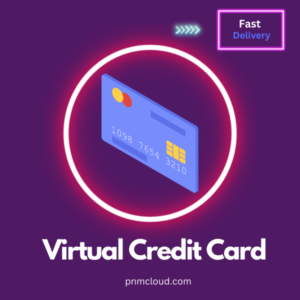Rywalizacja i Wyzwania: Tropiąc Zwycięstwo w Kasynie WinShark
Gracze z całego świata zbierają się w kasynie WinShark, gotowi do ostatecznej rywalizacji o tytuł mistrza. To miejsce, gdzie emocje sięgają zenitu, a adrenalina wypełnia powietrze. Każdy ruch, każda decyzja może przesądzić o losach gry. Na stołach pokerowych bije gorąco, a ruletka kręci się nieprzerwanie, kusząc graczy swoim tajemniczym urokiem.
W kasynie WinShark nie ma miejsca na nudę – każdy gracz musi stawić czoła różnorodnym wyzwaniom, zarówno strategicznym, jak i emocjonalnym. Przez złączenie sił i umiejętności, uczestnicy stają się nie tylko rywalami, ale także sojusznikami w walce o zwycięstwo. Dusza kasyna tętni życiem, a echo emocji rozbrzmiewa w każdym zakamarku.
Atmosfera w CasinoWinShark jest niepowtarzalna – eleganckie wnętrza kuszą luksusem, a profesjonalna obsługa sprawia, że gracze mogą skupić się jedynie na grze. To miejsce, gdzie marzenia o wielkich wygranych mogą stać się rzeczywistością, a każdy zakład skrywa w sobie niezwykły potencjał zmiany losów. Nie ma tutaj miejsca na przypadkowości – tylko determinacja i umiejętność czytania przeciwników prowadzą do sukcesu.
Podążając śladami poprzednich mistrzów, gracze w kasynie WinShark nieustannie doskonalą swoje umiejętności, gotowi na każde wyzwanie jakie przyniesie im kolejna rozgrywka. Tutaj liczą się nie tylko szczęście i zręczność, ale także strategia i refleks. kasa WinShark voucher to mekka dla tych, którzy pragną zapisać się w historii jako niepokonani mistrzowie gier hazardowych.
Buy Cloud Account Online - Best Cloud Accounts Shop 2023
Ice Casino η ιδανική λύση για διαδικτυακή ψυχαγωγία
Το Ice Casino είναι μια από τις πιο γνωστές και αξιόπιστες πλατφόρμες διαδικτυακών καζίνο, που προσφέρει μια μοναδική εμπειρία παιχνιδιού. Ξεχωρίζει για την μεγάλη ποικιλία παιχνιδιών του, τις γενναιόδωρες προσφορές και τις ασφαλείς συναλλαγές. Το περιβάλλον χρήστη είναι μοντέρνο και φιλικό, κάνοντας την πλοήγηση στην ιστοσελίδα εύκολη για όλους, ανεξάρτητα από την εμπειρία τους στα διαδικτυακά καζίνο.
Το πρώτο πράγμα που θα εντυπωσιάσει τους νέους παίκτες στο Ice Casino 34 είναι το μπόνους καλωσορίσματος, το οποίο προσφέρει γενναιόδωρες επιβραβεύσεις με την εγγραφή και τις πρώτες καταθέσεις. Επιπλέον, το καζίνο παρέχει πολλές καθημερινές και εβδομαδιαίες προσφορές, που κάνουν το παιχνίδι ακόμα πιο ενδιαφέρον. Οι παίκτες μπορούν να διαλέξουν ανάμεσα σε κλασικά φρουτάκια, ζωντανό καζίνο με πραγματικούς ντίλερ, καθώς και παιχνίδια τραπεζιών όπως μπλάκτζακ και ρουλέτα.
Ένα άλλο σημαντικό πλεονέκτημα του Ice Casino είναι η ασφάλεια στις συναλλαγές και η ποικιλία των μεθόδων πληρωμής. Οι παίκτες έχουν στη διάθεσή τους πολλές επιλογές, όπως πιστωτικές κάρτες, ηλεκτρονικά πορτοφόλια και τραπεζικές μεταφορές. Η ιστοσελίδα χρησιμοποιεί τα πιο σύγχρονα πρωτόκολλα κρυπτογράφησης για να εξασφαλίζει την προστασία των προσωπικών και οικονομικών δεδομένων των χρηστών. Με την υψηλή αξιοπιστία του και την εξαιρετική εξυπηρέτηση πελατών, το Ice Casino είναι η ιδανική επιλογή για κάθε παίκτη που αναζητά διασκέδαση και ασφάλεια σε ένα μέρος.

Why Should You buy Cloud through PnmCloud
Fast Delivery
We can give the most rapid-fire delivery for our guests. We begin recycling your VCC cards the moment you have completed your payment. Your immediate VCC card, including all the necessary information in your dispatch in the shortest time frame you can.
Cheap Service
VCC shops are among the most cost-effective spots online. It's possible to buy affordable VCC on our website only. While we offer a low- cost VCC Visa Card, we insure that our service is of high quality.
Refund Policy
Our Refund Policy provides the option of a refund for your guests. If you don't wish to use our VCC cards You can reach our client support department. They will help you in the entire process of refund. still, we will abate a small portion of your payment as a service figure.
What is cloud account?
A cloud account is an online account that allows you to access and use cloud computing resources such as storage, computing power, and applications, which are hosted on remote servers and accessed over the internet. Cloud accounts are typically provided by cloud service providers such as Amazon Web Services (AWS), Microsoft Azure, Google Cloud Platform (GCP), and others.
When you sign up for a cloud account, you typically create a user ID and password, and then you can access the cloud services offered by the provider. With a cloud account, you can create virtual machines, store and retrieve data, run applications, and perform other computing tasks in the cloud. Cloud accounts provide a way to scale your computing resources up or down as needed, without having to manage the underlying infrastructure yourself.
Cloud accounts are often used by individuals and organizations who need flexible, scalable computing resources for their work, without having to invest in expensive hardware and infrastructure. They can also be useful for collaboration, as multiple users can access the same resources and work together on projects in the cloud.
How do I open a cloud account?
To open a cloud account, you typically need to follow these general steps:
Choose a cloud service provider: Research and compare different cloud service providers, such as AWS, Microsoft Azure, and Google Cloud Platform, to determine which one best meets your needs.
Sign up for an account: Once you’ve selected a provider, navigate to their website and find the sign-up or create account link. Follow the prompts to create your account and provide any necessary information, such as your name, email address, and payment information.
Verify your email: After you create your account, you will typically receive an email with instructions on how to verify your email address. Click on the link in the email to complete the verification process.
Configure your account: Once your account is verified, you can log in and configure your account settings. This may include setting up billing preferences, selecting a region or data center, and configuring security settings.
Start using cloud services: After you have configured your account, you can start using cloud services, such as virtual machines, storage, databases, and other tools, depending on the cloud service provider and plan you selected.
It’s important to carefully read the terms and conditions of the cloud service provider you select, including their pricing and service level agreements, before opening an account. You should also ensure that you have adequate security measures in place to protect your data and resources in the cloud.
How do cloud accounts work?
Cloud accounts work by allowing users to access and use cloud computing resources such as storage, computing power, and applications, which are hosted on remote servers and accessed over the internet. Here’s a general overview of how cloud accounts work:
Provisioning resources: When you create a cloud account, you typically have the ability to provision computing resources such as virtual machines, storage, databases, and other services through the cloud service provider’s management console or API.
Accessing resources: Once you have provisioned resources, you can access them over the internet using a secure connection. Cloud service providers typically provide web-based consoles, command-line interfaces, or APIs to access and manage your resources.
Managing resources: You can manage your resources in the cloud using the cloud service provider’s management tools. This can include scaling resources up or down, monitoring usage, and configuring security settings.
Paying for usage: Cloud service providers typically charge users based on their usage of resources. This can include hourly or monthly charges for virtual machines, storage, and other services. Some cloud providers also offer free usage tiers or trials for new users.
Scaling resources: One of the primary benefits of using cloud accounts is the ability to scale resources up or down as needed. This means you can quickly and easily add or remove resources to meet changing demands for your applications or services.
Overall, cloud accounts provide a flexible and scalable way to access and use computing resources, without having to manage the underlying infrastructure yourself.
How to use the cloud?
Using the cloud involves provisioning and accessing cloud computing resources to store and process data, run applications, and perform other computing tasks. Here are some general steps to help you get started:
Choose a cloud service provider: There are many cloud service providers available, including Amazon Web Services (AWS), Microsoft Azure, and Google Cloud Platform (GCP). Choose a provider that offers the services and features you need.
Create a cloud account: Once you’ve chosen a cloud provider, sign up for an account and configure your account settings. This typically involves selecting a region, setting up billing preferences, and configuring security settings.
Provision resources: Use the cloud provider’s management console or APIs to provision resources such as virtual machines, storage, databases, and other services.
Access resources: Once you have provisioned resources, you can access them over the internet using a secure connection. Cloud providers typically offer web-based consoles, command-line interfaces, or APIs to access and manage your resources.
Store and process data: Use cloud storage services to store data and cloud computing services to process it. This can include using services such as Amazon S3 for object storage, Azure Blob Storage for unstructured data, and Google Cloud Storage for multi-region storage.
Run applications: You can run applications in the cloud using cloud computing services such as AWS Lambda, Azure Functions, and Google Cloud Functions. These services allow you to run code without having to manage the underlying infrastructure.
Monitor and manage resources: Use the cloud provider’s management tools to monitor and manage your resources. This can include scaling resources up or down, monitoring usage, and configuring security settings.
Overall, using the cloud involves choosing a provider, creating an account, provisioning resources, accessing resources, storing and processing data, running applications, and monitoring and managing resources. The exact steps and tools you use will depend on the cloud provider and services you choose.
Ryzyko i Intratność: Wspaniała Przygoda Hazardowa w Kasynie Spinamba - Zapraszamy, by się Android Spinamba casyno
Zapraszamy do niezwykłej przygody hazardowej w zalogować do kasyna Spinamba, gdzie ryzyko i intratność spotykają się w fascynującej mieszance emocji. Graj odpowiedzialnie i ciesz się świetnymi grami w trybie online, niezależnie od tego, czy preferujesz automaty, ruletkę czy karcianki.
W kasynie Spinamba czeka na Ciebie niezapomniana rozrywka, bogata w ekscytujące momenty i szansę na wygrane. Przygotuj się na ekscytującą podróż przez świat hazardu, gdzie czeka na Ciebie wiele gier, promocji i okazji do wygrania atrakcyjnych nagród.
Witaj w kasynie Spinamba, gdzie emocje biorą górę, a ryzyko i intratność idą w parze. Graj z głową, korzystaj z dostępnych bonusów i promocji, oraz dołącz do społeczności graczy, którzy podobnie jak Ty cenią dobrą zabawę i szansę na wspaniałe wygrane.
Dołącz do ekscytującej przygody hazardowej w kasynie Spinamba, gdzie każdy zakręcony slot czy kolejne rozdanie kart mogą przynieść Ci nie tylko emocje, ale także realne korzyści finansowe. Zaloguj się teraz do kasyna Spinamba i rozpocznij swoją przygodę już dzisiaj!





